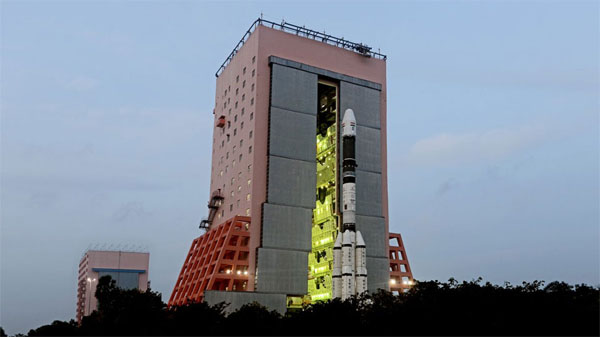Isro’s GSLV-F11/GSAT-7A Satellite Meant For Military Applications Placed In Orbit
Dec 19, 2018
SRIHARIKOTA: The Indian Space Research Organisation (Isro) on Wednesday successfully placed Gsat-7A — the second communication satellite meant primarily for military applications — in orbit.
Gsat-7A is meant for augmenting the existing communication capabilities of satellites utilised by the Indian Air Force.
GSLV-F11 (Geosynchronous Satellite Launch Vehicle) carrying the satellite lifted off from the second launch pad at Satish Dhawan Space Centre in Sriharikota at 4.10pm. It was the 13th flight of GSLV Mark II and the seventh flight with an indigenous cryogenic engine.
Around 19 minutes after take-off, the three-stage launcher ejected the satellite into a geosynchronous transfer orbit.
In the coming days, the satellite will be moved to its final geostationary orbital slot at an altitude of around 35,000km by firing its onboard chemical propulsion system.
Isro chairman K Sivan said GSLV had placed GSAT-7A in a super synchronous orbit achieving an altitude of 2,000km more than the intended slot. “We have three successful missions in 35 days,” he said
Sivan said during the today’s mission, the propellent for the second stage had been increased from 35.5 tonne to 40 tonne and cryo stage from 12 tonne to 15 tonne. “The cryo stage was also burnt to depletion. We have also used a Gregorian antenna to improve performance of the satellite,’ he said.
Vikram Sarabhai Space Centre director S Somanath said, “The vehicle was 1.8metre taller than usual. To achieve that, our team meticulously worked on the design, load and control systems, analysed and reviewed it.”
Gsat-7A — the 39th communication satellite of Isro — has communication capabilities to users in Ku-band over the Indian region.
Gsat-7A is expected to interlink all ground-based radars, airbases and airborne early warning and control aircraft for surveillance, maintain air superiority, gather intelligence by detecting aircraft, vessels and other vehicles in long range.
he satellite is also expected to boost the IAF’s network-centric warfare capabilities, i.e., linking all its platforms.
It will help drones conduct surveillance and satellite-controlled unmanned aerial vehicles (UAVs) improve their range and endurance to strike at enemy targets from long distances.
In September 2013, Isro launched Gsat-7 (Rukmini), a communication satellite exclusively for Navy to monitor the Indian Ocean Region up to 2,000 nautical miles and provide real-time inputs to Indian warships, submarines and maritime aircraft.
Courtesy: TOI

